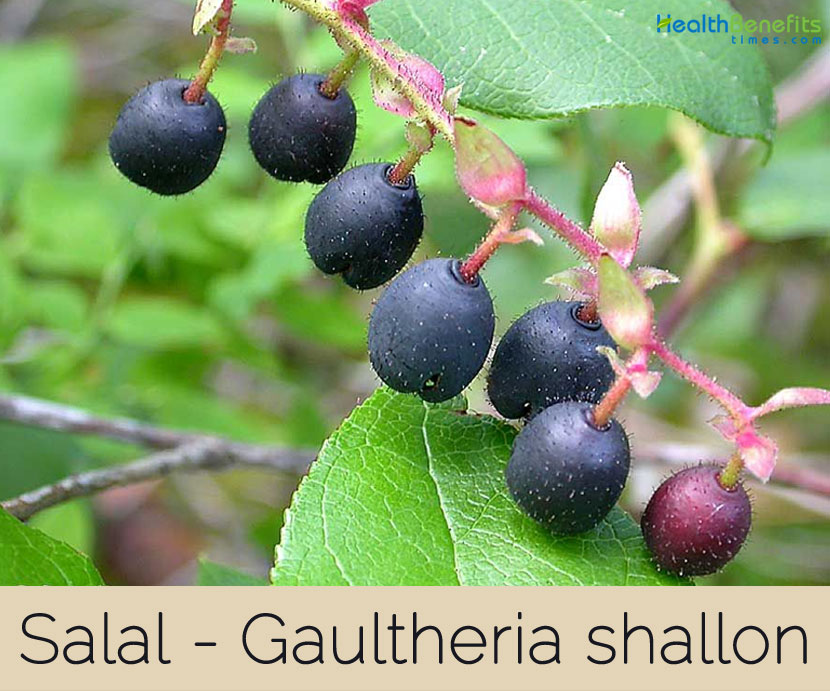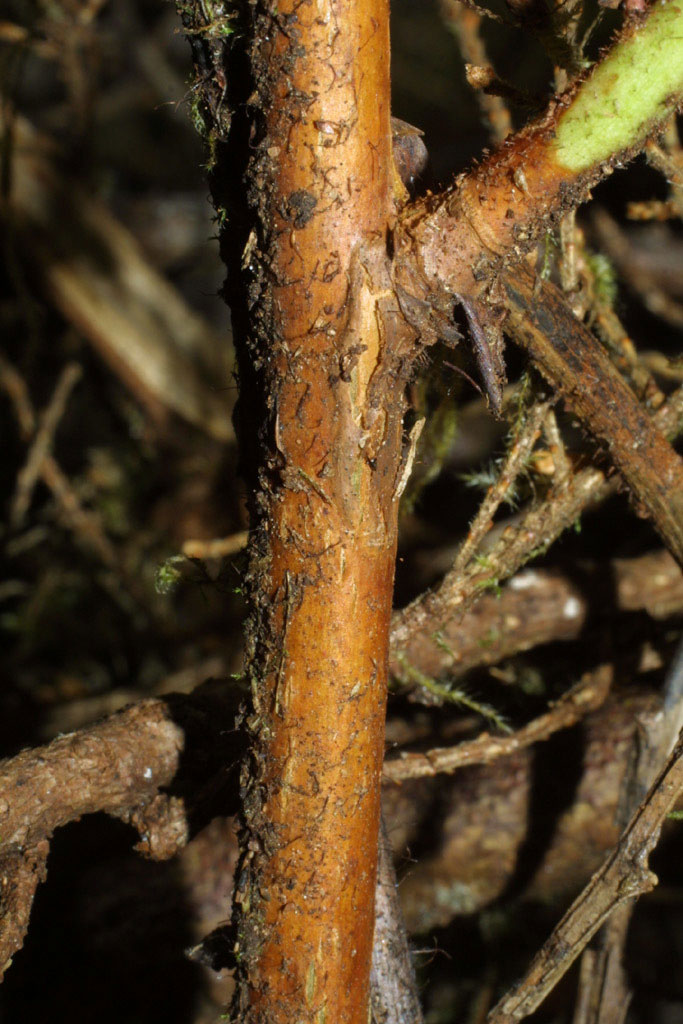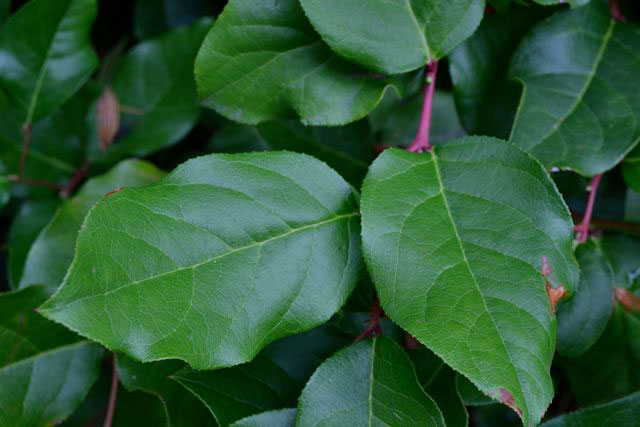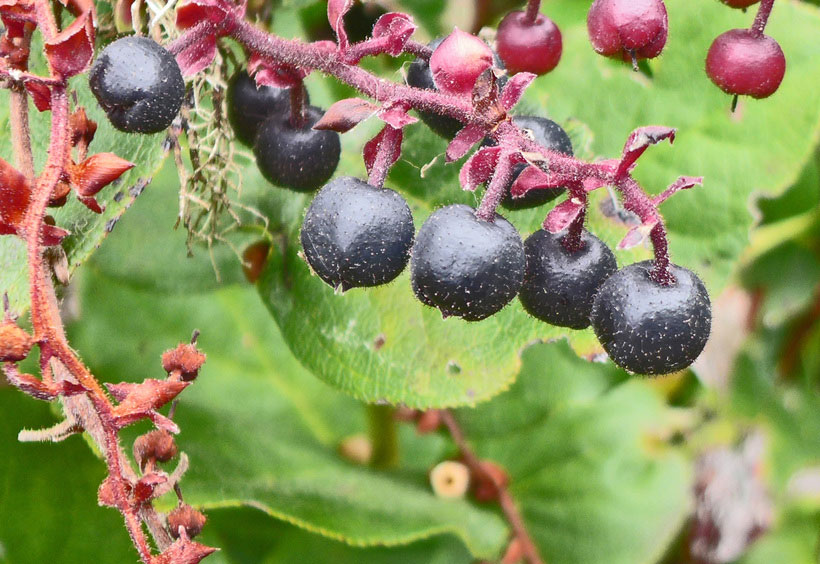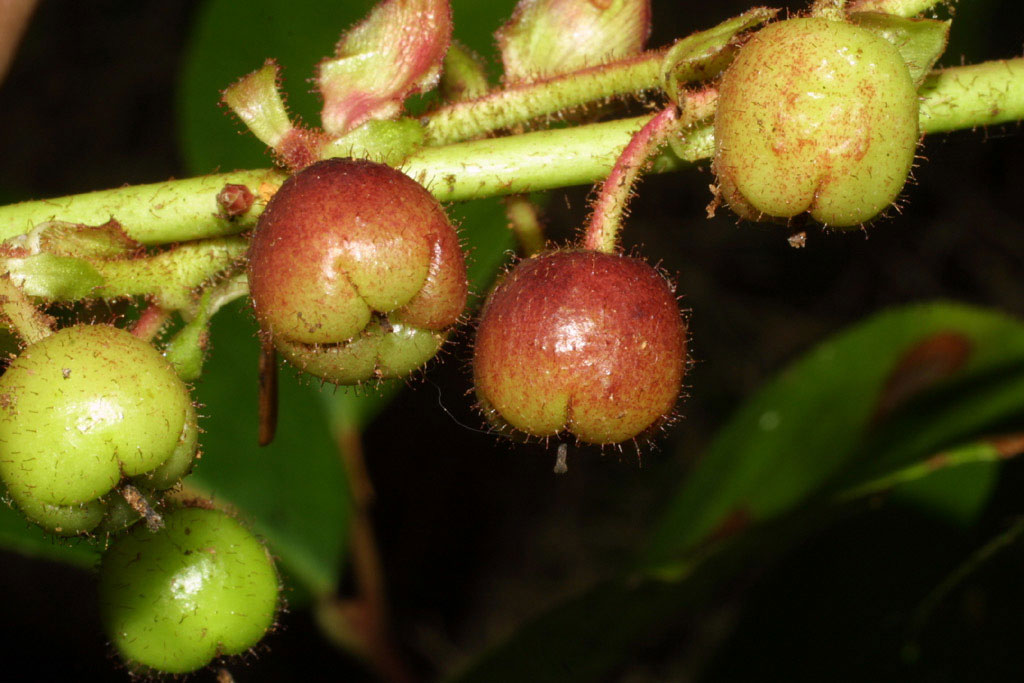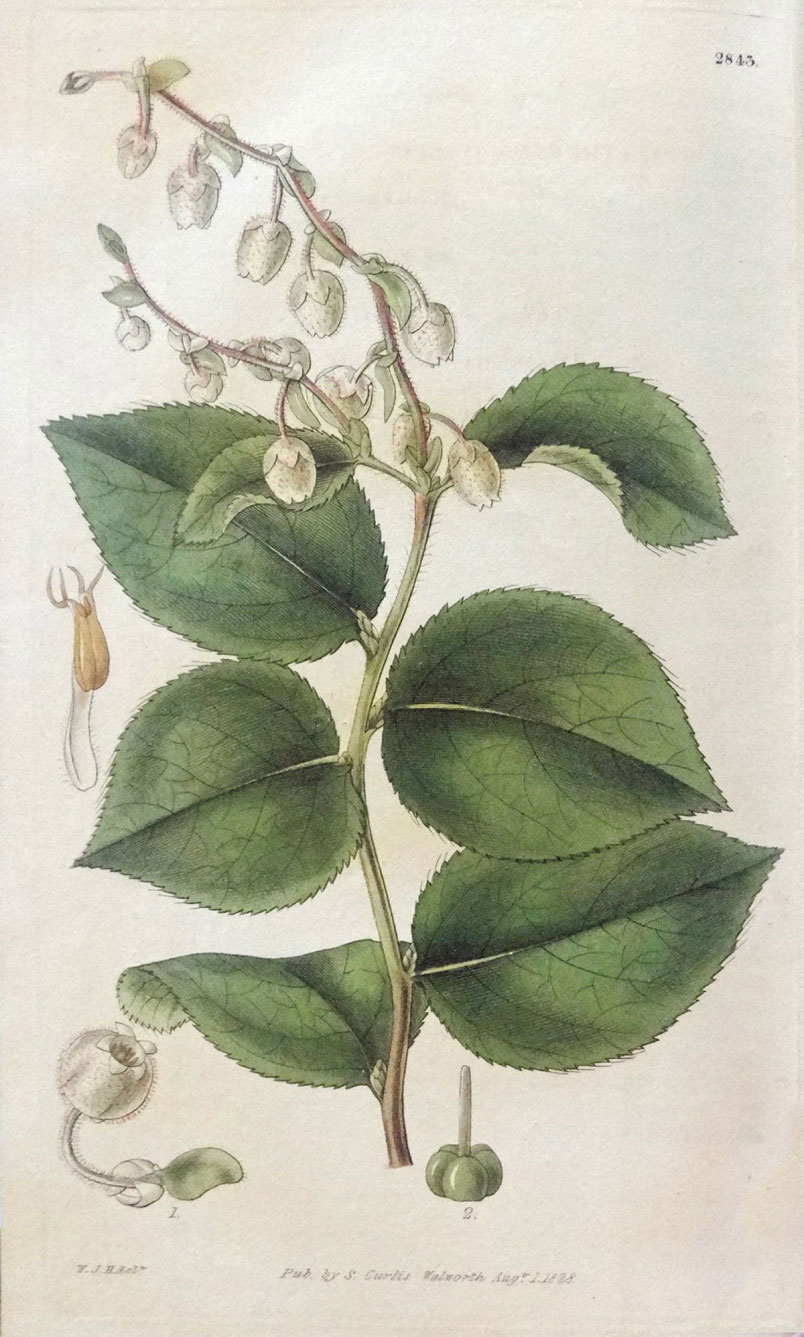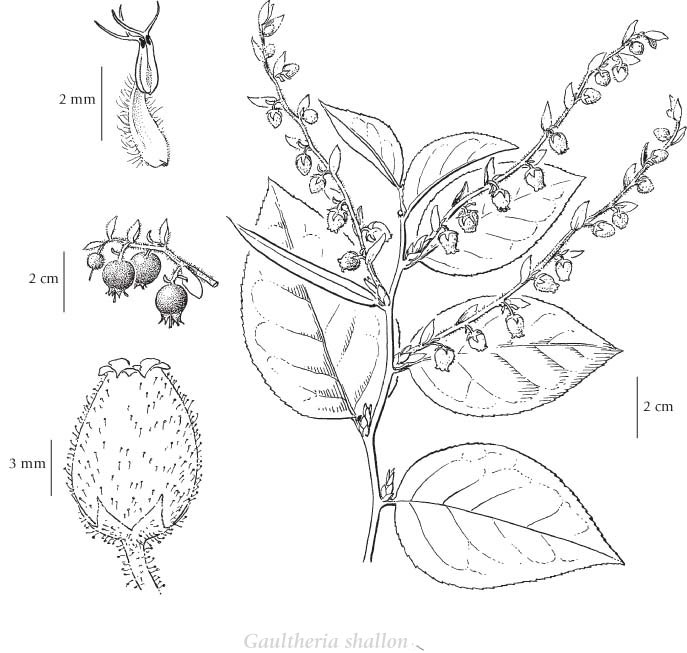| Salal Quick Facts | |
|---|---|
| Name: | Salal |
| Scientific Name: | Gaultheria shallon |
| Origin | Western North America |
| Colors | Green when young turning to reddish, purplish, or bluish black as they mature |
| Shapes | Round, rough surfaced, pseudo berry or capsule made up of a fleshy outer calyx and are covered with tiny hairs and average 0.24 to 0.4 inch (6-10 mm) in diameter |
| Taste | Taste a little like huckleberries |
| Health benefits | Appetite suppressant, Help your digestion, Protect from many diseases, Reduce Inflammation, Prevent the degeneration, Antioxidant properties |
| Name | Salal |
|---|---|
| Scientific Name | Gaultheria shallon |
| Native | Western North America. They are abundantly found in the wild in the coastal regions of western North America but have been localized in Europe too |
| Common Names | Salal, Shallon, Shallal |
| Name in Other Languages | Afrikaans: Salal Albanian: Salal Amharic: Salal Arabic: Silal (صلال) Armenian: Aghi (աղի) Azerbaijani: Salal Bengali: Şalāl Bulgarian: Salal Burmese: Salal Chinese: Xīnshuǐ (薪水) Croatian: Salal Çzech: Salal, libavka shalon Danish: Salal, Busket Bjergte Dutch: Salal, Appeltjesblad, Bergthee, Gaultheria, Appelblad, Kruipende patrijsbes English: Salal, Shallon, Shallal Esperanto: Salal Estonian: Salal Filipino: Salal Finnish: Salal, Isosalali French: Salal, Palommier, gaulthérie shallon Georgian: Salami (სალამი) Germany: Shallon-rebhuhnbeere, shallon-scheinbeere Greek: Salal Gujarati: Salāla (સલાલ) Hausa: Salal Hebrew: מלחים Hindi: Salaal (सलाल) Hungarian: Salal Icelandic: Sölt Indonesian: Salal Irish: Salal Italian: Salal Japanese: Sararu (サラル) Javanese: Salal Kannada: Salāl (ಸಲಾಲ್) Kazakh: Salal (салал) Korean: salal (살랄) Kurdish: Salal Lao: Keu (ເກືອ) Latin: Salal Latvian: Salal Lithuanian: Salal Macedonian: Salata (салата) Malagasy: Salal Malay: Salal Malayalam: Salal (സലാൽ) Maltese: Salal Marathi: salaal (सलाल) Mongolian: salal (салал) Nepali: Salaal (सलाल) Norwegian: Salal Oriya: ସାଲାଲ୍ Pashto: سالل Persian: سالل Polish: Salal Portuguese: Salal, chalão, gaultéria Punjabi: Sālala (ਸਾਲਲ) Romanian: Salal Russian: Salal (Салал), gaul’teriya shallon (гаультерия шаллон) Serbian: salal (салал) Sindhi: سزلل Sinhala: salal (සලාල්) Slovenian: Salal Spanish : Salal Sudanese: Salal Swedish: Salal, Vaktelbär Tajik: Salal (салал) Tamil: Calāl (சலால்) Telugu: Salal Thai: Salal Turkish: Salal Ukrainian: Sala (сала) Urdu: سالل Uzbek: Salal Vietnamese: Lương Welsh: Salal, gweunlwyn sialon Zulu: Isaladi |
| Plant Growth Habit | Erect to spreading, clonal, perennial evergreen shrub or subshrub |
| Growing Climates | Sunny edges, dappled shade, shady edges, marginal peatland forests, soligenous fens, forested swamps, bogs, muskegs, moist forest understory, coniferous forests, coastal mountain areas, woods and transition zones, rocky or sandy cliffs, coastal bluffs |
| Soil | Found on soils derived from a wide range of parent rocks, including diorite, breccia and basalt, serpentine, granite and metamorphic rock |
| Plant Size | 0.2 to 5 m (0.66 to 16.40 ft) tall |
| Bark | Reddish brown to grayish brown and longitudinally scaly |
| Stem | Stems are pilose to hirsute and branchlets glandular to pubescent |
| Twigs | New twigs green to red and covered with short hairs, older twigs grayish brown and smooth. Twigs change angles between each node, giving a distinctive zig-zag appearance |
| Leaf | Evergreen, alternate, round to ovate, pointed, glossy green, with a leathery texture. The lower side of the leaf is rough and lighter green. Each leaf has a base rounded or cordate, margins finely serrulate (with the “teeth” fimbriate apically), apex mucronate/apiculate or aristate, surfaces glabrous, reaching 5-10 cm long |
| Flowering season | May to June |
| Flower | Flowers are white to pale pink, urn-shaped and they appear in late spring and early summer. Each flower is composed of a deeply five-parted, glandular-haired calyx and an urn-shaped pink to white, glandular to hairy, five-lobed corolla, 7-10 mm long. |
| Fruit Shape & Size | Round, rough surfaced, pseudo berry or capsule made up of a fleshy outer calyx and are covered with tiny hairs and average 0.24 to 0.4 inch (6-10 mm) in diameter |
| Fruit Color | Green when young turning to reddish, purplish, or bluish black as they mature |
| Seed | Reticulate seeds approximately 0.04 inch (1 mm) in length |
| Propagation | By seed |
| Taste | Taste a little like huckleberries |
| Plant Parts Used | Fruit & Leaf |
| Season | September to October |
| Health Benefits |
|
Plant Description
Salal is an erect to spreading, clonal, and perennial evergreen shrub or subshrub that normally grows about 0.2 to 5 m (0.66 to 16.40 ft.) tall growing strongly from rhizomes. This loosely to densely branched shrub often forms dense, nearly impenetrable thickets. The plant is found growing in sunny edges, dappled shade, shady edges, marginal peat land forests, soligenous fens, forested swamps, bogs, muskegs, moist forest understory, coniferous forests, coastal mountain areas, woods and transition zones, rocky or sandy cliffs, coastal bluffs. The plant is found on soils derived from a wide range of parent rocks, including diorite, breccia and basalt, serpentine, granite and metamorphic rock. New twigs are green to red colored and covered with short hairs, older twigs are grayish brown and smooth. Twigs change angles between each node, giving a distinctive zig-zag appearance. Barks are reddish brown to grayish brown and longitudinally scaly.
Leaves
Leaves are evergreen, alternate, round to ovate, pointed, glossy green, with a leathery texture. Each leaf has a base rounded or cordate, margins finely serrulate, apex mucronate/apiculate or aristate, surfaces glabrous, reaching 5-10 cm (2.0 to 3.9 in) long. Leaves are shiny and dark green on the upper surface, and rough and lighter green underneath, with a pronounced central vein. The leaves are alternate and zigzag off the red-mealy barked stems (although older plants tend to straighten out and lose the zigzag formation).
Flower
The inflorescence consists of a bracteate raceme, one-sided, with 5 to 15 flowers at the ends of branches. The flowers are hermaphroditic (have both male and female organs) and are pollinated by insects. Flowers are white to pale pink, urn-shaped and they appear in late spring and early summer. Each flower is composed of a deeply five-parted, glandular-haired calyx and an urn-shaped pink to white, glandular to hairy, five-lobed corolla, 7-10 mm (0.28 to 0.39 in) long. Flowering normally takes place in between May to June.
Fruit
Fertile flower are followed by round, reddish, purplish, or bluish black, rough surfaced, pseudo berry or capsule which is made up of a fleshy outer calyx. Fruits are covered with tiny hairs and average 0.24 to 0.4 inch (6-10 mm) in diameter. Each fruit contains an average of 126 brown, reticulate seeds approximately 0.04 inch (1 mm) in length. The fruit is edible and is ripe in between September to October. The berries taste a little like huckleberries but they are sweeter and have a drier texture.
Health benefits of Salal
Gaultheria shallon berries were an essential food resource for native people. The North American ate them fresh and dried them into cakes. They were also used as a sweetener. The leaves of the plant sometimes used to flavor fish soup. These are some health benefits of Salal berries for your body
1. Appetite suppressant
Several researchers have discovered that people who chewed the leaves of these berries have noticed that their appetite is suppressed. You can use the young leaves of these berries as appetite suppressant. Also, if you want to lose weight, then you can consume these leaves. You should stop eating cakes and start eating healthy. Salal berries are one of the best choices for you. Also, it is known fact that salal berries can help you to get a relief from the heartburn or colic.
2. Help your digestion
Berries have fiber which can help to prevent the constipation and it can help to normalize the gut health. Also, it can help to drop cholesterol and it will diminish the risk of heart diseases and some types of cancers. Many adults eat only half the amount of fiber which is recommended by doctors so they should eat the right dose of fiber and in this way they will keep their health.
3. Protect you from many diseases
It is known fact that these berries can help to stay protected from many different diseases, such as retinopathy diabetic, kidney disease, cataracts, glaucoma, Alzheimer’s disease, varicose veins and cardiovascular diseases. These berries have flavonoids which can help your body to stay away from the mentioned diseases.
4. Reduce Inflammation
According to Puget Sound Native Americans, herbalists recommend the leaves of salal for use in tinctures and teas because of their astringent effect. They are still bolstered to reduce bladder inflammation, tackle diseases like heartburn, and also used to reduce inflammation of the sinuses.
Salal can stimulate the immune function of human body, relinquish and dredge collateral channels. A universal advantage for the public is that the leaves of Salal can be made into a paste to relieve insect stings and bites.
5. Prevent the degeneration
Salal berries are rich in vitamins and antioxidants which can help to block the degeneration. Also, they can help us to have a long and sustaining life. Salal berries are some of the best fruits which can help to overcome the danger of chronic disease. Salal berries are not as tasty as other thimbleberries, like huckleberries, but they have a good flavor and you can easily find them. You should pull the entire pink stem of berries off and process them all at once because this is the easiest way to crop them.
6. Antioxidant properties
It is known fact that these berries are rich in Vitamin C. This fruit is acting as antioxidant which can help you to stay safe from the dangerous effects of free radicals. If you want to have healthy teeth, skin and hair, then you should start using these berries in your diet.
Traditional uses and benefits of Salal
- A poultice of the toasted, pulverized leaves has been applied to cuts.
- A poultice of the chewed leaves has been applied to burns and sores.
- The leaves have been chewed to dry the mouth.
- An infusion of the leaves has been used as a stomach tonic and a treatment for diarrhea, coughs, TB etc.
- In traditional medicine, it has been used as an astringent, a poultice and a stomach tonic.
- The plaster can be applied to cuts and insect bites and leaves can be chewed and applied to burns and sores.
- The stomach tonic is made from an infusion of the leaves and helps to reduce internal inflammation such as stomach ulcers, heart burn, treat diarrhea, period pain, coughs and tuberculosis.
- Gaultheria shallon has been used for its medicinal properties by local natives for generations.
- Leaves have an astringent effect, making it an effective anti-inflammatory and anti-cramping herb.
- Leaves prepared in a tea or tincture are thought to decrease internal inflammation such as bladder inflammation, stomach or duodenal ulcers, heartburn, indigestion, sinus inflammation, diarrhea, moderate fever, inflamed / irritated throat, and menstrual cramps.
- Teas made from the leaves were used to treat coughs, tuberculosis, and diarrhea.
- Berries are rich in vitamins and flavonoids that prevent ageing and skin degeneration.
- The leaves were used as appetite suppressants.
- Tea prepared by boiling the leaves in water is believed to have positive effects in decreasing and treating bladder inflammation, stomach and intestinal ulcers, heartburn, indigestion, sinus conditions, diarrhea, fever, sore throat, and menstrual cramps.
- Leaves are also used in making poultice that is used to ease pain and discomfort caused by insect bites and stings.
- The Klallam, Bella Coola and Quileute People have chewed salal leaves and spit them on burns and sores.
- The Samish and Swinomish People have used the leaves for coughs and tuberculosis.
- The Quinault People have used them for diarrhea and flu-like symptoms.
Culinary Uses
- Fruit can be consumed raw, cooked or dried for later use.
- Fruit can also be made into preserves, pies, drinks etc. or be dried and used like raisins.
- A pleasant tea is made from the leaves.
- Native American tribes ate berries fresh and dried and used them into cakes.
- They were also used as a sweetener, and the Haida used them to thicken salmon eggs.
- The leaves of the plant were also sometimes used to flavor fish soup.
- shallon berries are used locally in jams, preserves, and pies.
- In modern times people eat them raw or use them to make jams, jellies, pies or as dried fruit.
Other Facts
- A purple dye is obtained from the fruit.
- A greenish-yellow dye is obtained from the infused leaves.
- It is a ground cover plant for a shady position under trees, spreading slowly by means of suckers.
- It should be spaced about 90 cm apart each way.
- Salal berries are consumed by squirrels, chipmunks and bears while the leaves and shrub are consumed by deer and mules.
Prevention and Control
Due to the variable regulations around (de)registration of pesticides, your national list of registered pesticides or relevant authority should be consulted to determine which products are legally allowed for use in your country when considering chemical control. Pesticides should always be used in a lawful manner, consistent with the product’s label.
Prevention
Public Awareness
Outside of its native range it is important that foresters, cattle ranchers, protected areas managers and the general public are made aware of the existence of this shrub in the regions that they work so they can try to control its spread.
Control
Physical/Mechanical Control
Mechanical control is often ineffective with G. shallon owing to its capacity to sprout from rhizomes. In fact, if applied carelessly it may be counter effective and increase spread.
Fire is not recommended as an eradication measure, as fire can consume the aboveground part, but the shrub can survive by regeneration from the underground structures.
Biological Control
Control of this species by biological control is currently being considered. Potential bio control agents include a number of fungal pathogens identified as natural enemies of G. shallon.
In the UK, cattle ranching can be used to break continuous thickets and reduce G. shallon to a mere component of heathland vegetation.
Chemical Control
Fertilization in mixed forests with presence of G. shallon ensures sufficient levels of nutrients for trees and other canopy vegetation, reducing the competitive effect of G. shallon. G. shallon is resistant to many herbicides including 2, 4-D, 2, 4, 5-T, amitrole, picloram and silvex. Mode of herbicide application, season and site characteristics all have a great influence on the response of G. shallon to herbicides. Herbicides are however often impractical or excessively expensive to be effective, owing to the need for repeated application. G. shallon is most susceptible to foliage sprays at bud break, although many plants recover later from damage.
References:
https://www.itis.gov/servlet/SingleRpt/SingleRpt?search_topic=TSN&search_value=23658#null
https://npgsweb.ars-grin.gov/gringlobal/taxon/taxonomydetail?id=366
https://pfaf.org/user/plant.aspx?latinname=Gaultheria+shallon
https://www.cabi.org/isc/datasheet/24761
https://gd.eppo.int/taxon/GAHSH
http://www.theplantlist.org/tpl1.1/record/kew-2818048
https://en.wikipedia.org/wiki/Gaultheria_shallon
https://plants.usda.gov/core/profile?symbol=gash


